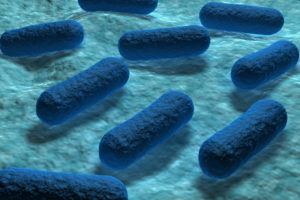The Centers for Disease Control and Prevention (CDC) reported on June 28, 2018 the multistate outbreak of E. coli O157:H7 infections linked to Romaine Lettuce appears to be over. CDC, public health and regulatory officials in several states, and the U.S. Food and Drug Administration (FDA) investigated a multistate outbreak of E. coli O157:H7 infections.
Dr. Scott Gottlieb, commissioner of the federal Food and Drug Administration, said in a statement, samples of canal water in the Yuma area of Arizona were found to contain the same genetic strain of E. coli causing the outbreak which lasted more than three months from the first recorded illnesses. The strain of E. coli bacteria tied to the deaths of five people found in the canal in Arizona made its way to an Alaskan prison where eight inmates fell ill. The F.D.A. investigators were able to trace the illness back to whole-head romaine lettuce harvested from Harrison Farms in Arizona.
the federal Food and Drug Administration, said in a statement, samples of canal water in the Yuma area of Arizona were found to contain the same genetic strain of E. coli causing the outbreak which lasted more than three months from the first recorded illnesses. The strain of E. coli bacteria tied to the deaths of five people found in the canal in Arizona made its way to an Alaskan prison where eight inmates fell ill. The F.D.A. investigators were able to trace the illness back to whole-head romaine lettuce harvested from Harrison Farms in Arizona.
As recent as July 2018, McDonald’s pulled salads from restaurants after health experts announced that more than 100 people were infected by an intestinal parasite. The CDC investigated the multi-state cluster of Cyclospora infections linked to McDonald’s salads and found 61 cases from 7 states—Illinois (29), Iowa (16), Minnesota (3), Missouri (7), Nebraska (2), South Dakota (2), and Wisconsin (2). Cyclospora is a microscopic parasite found in food or water that has been contaminated with feces. Symptoms appear within a few days of infection and include nausea, fatigue and diarrhea for more than a week.

Stomach infection and gastroenteritis or gastro caused by a viral bacterial illness by contaminated food with parasitic bugs causing medical flu symptoms as diarrhea, vomiting and abdominal cramps in the human digestive system.
With current technology and improvements in science, why would it take months to determine the source or cause of such multi-state outbreaks? The Center for Science in the Public Interest and other organizations pressed the FDA in a letter calling for action whiled the E. coli outbreak remained unsolved. Any delay in finding the source of food outbreaks can cost lives and create havoc. When examining the difficulties investigators face, the global food traffic network appeared to be complex as food products are constantly crossing country borders,
generating a worldwide network.If you would like to understand why some people get sick and others die after being infected by the food-borne pathogen E. coli O157:H7, please read the article posted in Science Daily written by Edward Dudley, Penn State.
